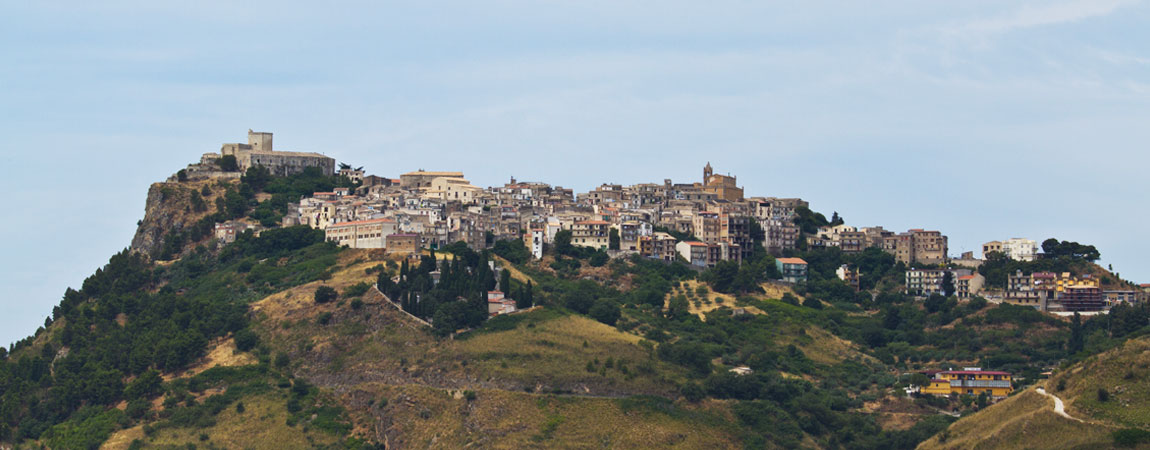
The village of Giuliana, in the province of Palermo, has a very ancient history and origins that are lost in the past.
Knowing the events that led not only to its foundation but also to its development means understanding more deeply the reasons that make Giuliana's town so fascinating, also from an architectural point of view. Here, then, is everything you need to know on the subject.
The origins of the town of Giuliana
The origins of Giuliana's name are already a clear indication of its history: with this name, in fact, it was called a Roman farmhouse which according to a document from 1185 was located on the mountain where the town of Giuliana is currently located. The name was to indicate belonging to the gens Julia but just at the end of 1185 the emperor William the Good decided to cede the territory and the farmhouse to the bishop of Monreale. For many years the territory remained at the mercy of itself, then in the fourteenth century there was the development of urban planning, thanks to a series of changes of ownership from the Ventimiglia family to that of the Peralta. In 1543 there was a turning point, because Charles V decided to raise the territory to the rank of marquisate, so the property began to appeal to many, also attracted by the possibility of receiving the title of marquis with it.
The history of Giuliana's town
In 1640 both the territory and the title of marquis underwent a passage which in some way marked the history of the town of Giuliana as it was ceded by the Cordona family to the Gioeni family who remained firmly in power until 1812, when feudalism was abolished and therefore the territory was able to establish itself in common and obtain its freedom. Under the Gioenis, the village of Giuliana experienced a great architectural and economic development, given that there were numerous flourishing businesses carried out in the area. Since the early twentieth century, however, the village has experienced the phenomenon of emigration of its citizens and a gradual depopulation.
What to see in Giuliana
There are many i monuments that can be admired to Juliana, both of religious and civil architecture. One of the most famous is certainly the Aragonese castle also known by the name of castle of Frederick II, within which Federico d'Aragona stayed in 1332, who also took care of having a watchtower built. In the immediate vicinity is also the Church of the Holy Trinity, from the coeval era, which has a Mannerist-style portal with the Olivetan coat of arms set on it. Another one church of great beauty is that of the Holy Crucifix, which was built on the remains of what was once the church of Santa Margherita. This structure preserves some works of great value such as the simulacrum of the crucifix which is the one that is carried in procession during the Easter party but also some very beautiful stuccos that were made by the artist Nicolò Curti. In the Shrine of Santa Maria dell'Udienza there is the statue of the saint, which is also there patroness of Juliana. Finally the church of the Rosary it was built in the XNUMXth century and is made even more precious by the presence of polychrome marble and frescoes depicting sacred scenes.
Things to do in Giuliana
Giuliana is also a very lively locality from a cultural point of view, so events are organized on its territory institutional events, of different types.
One of the most striking is the historical re-enactment of the Status Julianae which was held for the first time in August 1997. During the event, a very particular event was staged, namely that day in 1543 when Charles V decided to raise the village from county to marquisate, to give it more importance. The entire population took part in the event, which was held outside the newly restored Frederick's castle, for an even more impressive result. Among the other events held in the area also the Feast of the Most Holy Crucifix, organized on the first Friday after Easter, and the festival of macaroni and ancient grains, which instead takes place in the month of August. At Christmashowever, it is much appreciated the living nativity scene held around the New Year.
How to get to Giuliana
Those who have let themselves be intrigued by Giuliana's story and want to get to know the town better, can reach it, by car, from Messina first along the A20 and then the E90 while from Palermo the reference road is the SS624. From Catania, on the other hand, it is necessary to take the A19, from Syracuse after the A19 continue on the E932, from Trapani the A29 and then the E933, finally from Enna the SS640. Giuliana doesn't have its own train station, so those who prefer to move around on the train he will have to choose the nearby stations of Salemi Gibellina, Castelvetrano or Cammarata from which, then, continue with the local bus lines made available by the AST company.
© Image by find, CC BY-SA 3.0, via Wikimedia Commons









